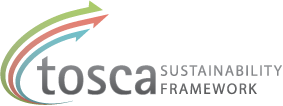Uses of Eco-efficiency in business
By Emma Ringström & Johan Widheden
Eco-efficiency has become a widely used management concept among large companies worldwide.
The reason for this can be as Kuosmanen states: Many policy makers, business managers, and consumers are keen to make environmentally friendly decisions, but they simply lack the necessary information resources to compare different alternatives. …. The function of Eco-Efficiency measures is to guide decision making by politicians and managers, as well as consumers, by facilitating systematic comparisons of products and production technologies in a way that comprehensively accounts for various criteria and their tradeoffs.”
Companies may choose to measure their eco-efficiency performance for many
different reasons – for example:
- to track and document performance and progress – “what gets measured, gets managed”
- to identify and prioritize opportunities for improvement
- to help managers make decisions on a product or business portfolio
- to demonstrate why improvement is limited in certain areas or will not be possible to the degree expected by certain stakeholders.
- to identify cost savings and other benefit, short term, but also longer term by including scenarios for future costs.
- because the results are easier to interpret for decision makers with a non-technical background
- because eco-efficiency is more easily understood than “sustainability”, it can create knowledge and drive for a sustainable development throughout the organization of a company
- because it relates to the life cycle of the products and can therefore facilitate cooperation between companies
- monitoring and reporting eco-efficiency publicly is a way to communicate a key element of a corporation’s progress on sustainable development to external audiences, including investors, insurers, consumers, and other interested groups.
Examples of how Eco-efficiency Assessment (EEA) can be used in different company functions
Future product portfolio
EEA can assist in deciding which existing products and processes to target with future investments and which to maintain or phase out to have a product portfolio that fulfills current and future customer and environmental requirements and top of the line growth opportunities. See more in the section Develop more sustainable products and in the example Eco-Premium solutions (EPS).
An important use of EEA is also to evaluate product development projects at an early stage in order to be sure that the new products are more sustainable. This can be done for example by including eco-efficiency aspects and calculations in the product development process, such as in R&D gate models. See more in the example: Eco-efficiency assessment in R&D process and in Further reading: Stage–Gate model.
Investments
EEA can be used for including sustainability aspects in decisions regarding investments, divestments, mergers and acquisitions. Is a proposed acquisition or process technology a good investment, considering e.g. future environmental legislation? It can for example be used as a basis for a decision on where to build a new plant, taking into account the pre-requisites of the different locations such as energy supply, fresh water supply, transportations required etc.
Product comparisons
EEA can be used for comparing the company’s own products or comparing with competing products. By comparing your own products with the competing products on the market knowledge about the future possibilities and threats for your product can be obtained. For example if the assessment results show that your product requires much less energy during production or during the use of it compared to the competitors, it has good possibilities to stay on the market even if the energy prices increase. New pricing can naturally also be a consequence of obtaining this new information. If it is the other way around you will have the knowledge that this might be an issue in the future and can prepare for it.
Sourcing
With knowledge on the environmental impact of raw materials, utilities and transports used, discussions with suppliers and hauliers about decreasing this impact can be started. EEA can for example be used for evaluating or putting demands on suppliers or to evaluate different modes of transportation.
Own operation/production
EEA can be used in optimizing your own operations. By being able to identify significant aspects, environmentally and financially, throughout the life cycle of a product, sub-optimizations can be avoided and resources can be put where they will be most beneficial.
Environmental impacts of a proposed change can also be evaluated from an eco-efficiency perspective before the change is being carried out to see if it will lead to an actual improvement. For example the value of installing equipment such as a water treatment plant can be evaluated from an economic and environmental point of view.
Marketing/Communication
The results of an EEA can be used to address customers who value sustainability. Optimizing products and process chains in cooperation with customers can also be done based on the information from the EEA since this can also include down-stream applications..
The results of EEAs can also be used for communication with external decision makers e.g. authorities and Non Govermental Organizations (NGO’s).
Different tools and methods are described within the DANTES project. The example Eco-efficiency analysis of products or processes describes how an Eco-efficiency analysis was conducted by AkzoNobel.
A leaflet describing how AkzoNobel uses Eco-efficiency can be found here.

